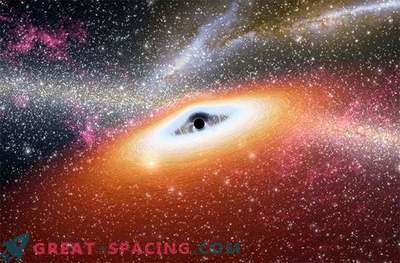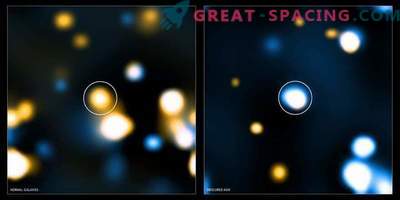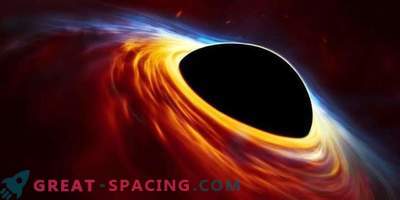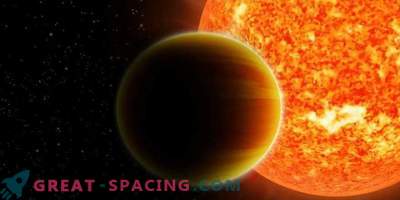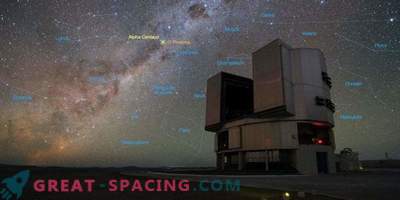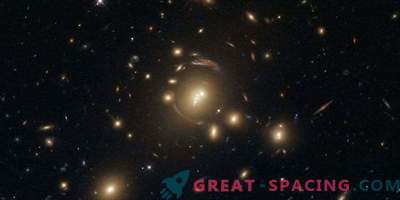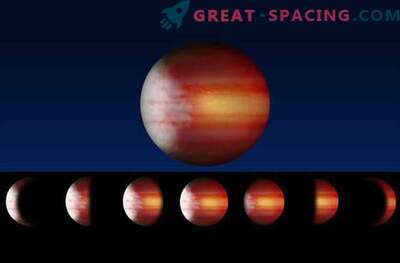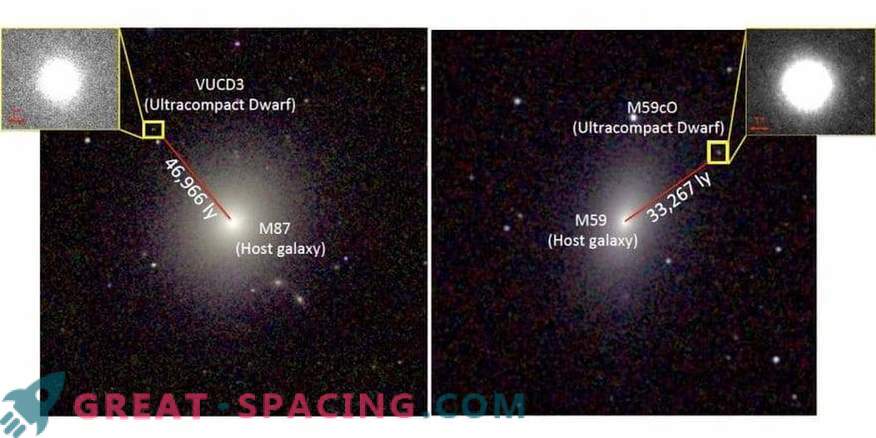
Three years ago, a team from the University of Utah found a supermassive black hole in a dwarf galaxy, and then another incredibly tiny one. These findings made it clear that dwarfs can be remnants of larger galaxies, which have ejected the outer layers after colliding with larger galaxies.
Now the same group stumbled upon two more ultra-compact galaxies hiding supermassive black holes. These examples potentially double the number of supermassive holes that may exist in the Universe. Black holes make up most of their mass, which confirms the theory: dwarfs are remnants of massive galaxies, torn apart by larger galaxies.
“We still do not understand the whole process of galactic formation and evolution,” says study author Chris An. “Perhaps part of the centers are compact galaxies separated from the outer parts.”
Measurement of galaxies
Scientists measured two found objects VUCD3 and M59cO, located behind the spiral arms of the Milky Way in the Cluster of Virgo galaxies. Supermassive black holes were found in both. In the first object, its mass is equal to 4.4 million solar (13% of the mass of the galaxy), and in the second - 5.8 million solar (18%). To understand the scale, the hole in the Milky Way occupies only 0.01% of the galactic mass (4 million solar).

Scientists have measured the movement of stars with the help of the Gemini Observatory on the volcano Mauna Kea (Hawaii). In order to track ultra-compact galaxies, an adaptive optics method was used (it helps to correct the distortions created by the Earth’s atmosphere).
“This is surprising, because ultra-compact dwarfs occupy only 0.1% of our galaxy. But there are black holes in them that are larger than ours, ”admires An.
To calculate the mass of objects, astronomers used the Gemini Observatory. The earth's atmosphere creates distortion that interferes with the calculations. The laser shoots into the sky, creating a small fake star. Then, astronomers move the mirror hundreds of times per second to calculate the level of distortion. The results obtained are applied to the necessary objects. Adaptive optics allows you to bring a blurred image into focus.
Scientists have noticed that the movement of stars in the galactic centers was much faster than in the outer areas - a classic case of the presence of a black hole.
Secrets of ultra compact dwarf galaxies
Ultra-compact dwarf galaxies were found in the 1990s. They contain hundreds of millions of stars, which are located on the territory of 100 light years in width. When trying to figure out what was happening there, difficulties arose, since the galaxies weighed more than the sum of their stars. In 2014, Anil Seth suggested that a hidden supermassive black hole would add extra mass. There is also an alternative theory of similar dwarfs: these are supermassive stellar groups (100,000) in which objects appeared at the same time. The largest cluster in our galaxy holds 3 million stars, while ultracompact dwarf galaxies have 10-100 times more. And here it is important to understand: are they the same or is there a difference?
“Obviously, they are different, and research confirms this,” says Seth.
Black holes and the formation of galaxies
Black holes are areas with such powerful gravity that even the light cannot escape. They appear at the destruction of the stars. Supermassive mass reaches more than 1 million suns. It is assumed that such giants live in the centers of all large galaxies.
How did they find themselves in such crumbs? According to one theory, ultra-compact dwarf galaxies could have been much larger, but at a certain period they passed through destruction due to the effects of an even larger galaxy. This information changes the understanding of how galaxies are created and developed. Thus, ultra-compact dwarf galaxies allow you to look at the processes that occurred in the past and are not well understood.


